order
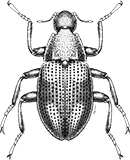
Coleoptera
“Adult Beetles”

Coleoptera
“Larval Beetles”

Diptera
“True Flies”

Ephemeroptera
“Mayflies”

Hemiptera
“True Bugs”

Lepidoptera
“Aquatic Caterpillars, Snout Moths”

Megaloptera
“Alderflies, Dobsonflies, and Fishflies”
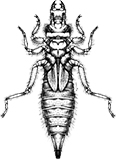
Odonata
“Dragonflies and Damselflies”

Plecoptera
“Stoneflies”

Trichoptera
“Caddisflies”
family
Sericostomatidae
genus
Agarodes
“Bush-tailed Caddisflies”
Genus Overview
12 species in North America. Species are collected in sand and gravel deposits.
Characteristics
POLLUTION TOLERANCE
Southeast: 0
Upper Midwest: 3
0 = least tolerant, 10 = most tolerant
FEEDING HABITS
Collector / Gatherer
Shredder / Detritivore
Shredder / Detritivore
MOVEMENT
Burrower
Sprawler
Sprawler
DISTRIBUTION
Widespread (east of the Rocky Mtns.)
HABITAT
Lotic-depositional
Lotic-erosional
Lotic-erosional
Diagnostic Characters
order
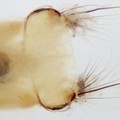
Prolegs With Single Hook
family
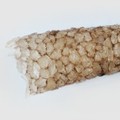
Curved, Smooth Sand Case
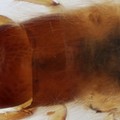
Mesonotum sclerotized
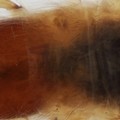
Metanotum Mostly Membranous
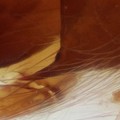
Pronotum with Pointed Anterolateral Corners
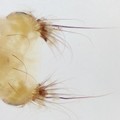
Setose Anal Prolegs
+ Expanded Character List
Order:
Larvae: Wings/wing pads absent. Eye spots present, but compound eyes absent. Antennae usually small, inconspicuous. Three pairs of segmented legs present on thorax. Pair of anal prolegs, each with single hook, located on last abdominal segment. Larvae can be free-living, in silken retreats attached to substrate, or in usually-portable tubes or cases made of sand, rocks, or plant material.
Family:
The larva lives in a cylindrical case, slightly curved and made of fine sand; the tops of the first two thoracic segments are covered by sclerites; the top of the third thoracic segment has a few small sclerites; there is no prothoracic horn (stiff needle between the front legs); the posterior end of the body is unusually hairy (at least 60 setae); anal prolegs are mostly fused with the end of the abdomen except their apical hooks.
Genus:
corner of pronotum produced into a sharp point,
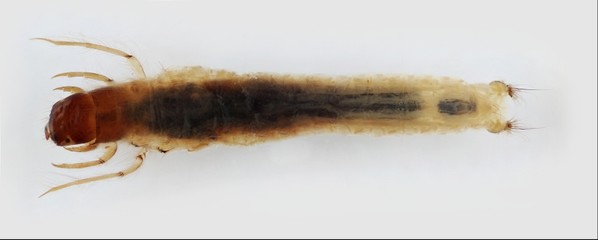
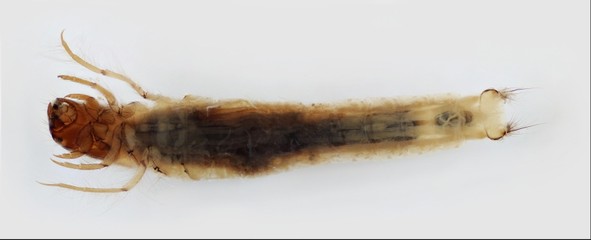
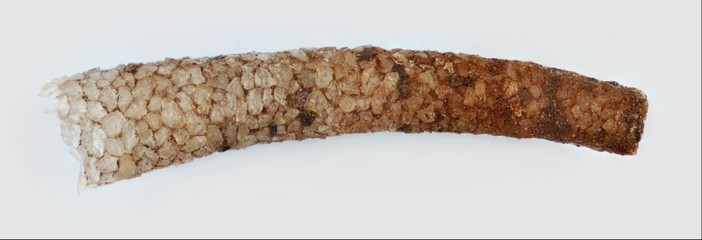
Dorsal
Ventral
Case



